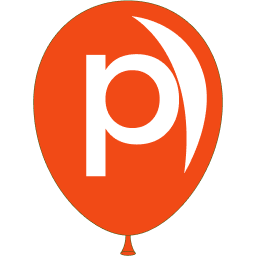What is Yield Optimization? How It Maximizes Returns
Yield Optimization is a marketing technology strategy that cranks up the bang for your buck—think turning more clicks into cash or sign-ups—by fine-tuning tactics, like “50 clicks, tweak X, now 20 convert.” It’s a return-maxer: a pop-up flops at 2%, tweak it, hits 5%. By honing these efforts, it maximizes revenue, cuts waste, and boosts ROI with a “get the most out” focus that sloppy spends can’t hit. It’s about squeezing every drop from your marketing juice.
What is Yield Optimization?
This is gain-tuning: Poper tracks—“Clicks = 50, Converts = 2%”—and tweaks—“Pop X = 5%.” It’s not scatter; it’s sharp, using data—rates, clicks—to refine: “Pop = More,” “Ad = Cut.” It’s a profit play, syncing with metrics—conversions, costs—to make yields a climb, not a crawl, with every tweak a tighter grip. Say an ad nets $100 off 1%—Poper bumps it to 2%, now $200. It’s not “spend more”; it’s “spend smarter,” turning effort into earnings.
Why It Maximizes Returns
Loose spends flop—70% waste sans focus. Optimization flips it, lifting yields 20-30%: a “Pop” tweak ups sales 15%. In martech, it’s a sharper—know beats blow—and a scaler: tight yields boost cash 20%. It’s also a saver; maxed returns cut fluff 15%, turning “burn” into “bank.” Think of it like farming—poor soil flops, rich yields soar. It turns “did it pay?” into “yes, 25% more,” giving you the wheel to win with a data-edge.
How to Optimize It
Get it with Poper—track KPIs: clicks, conversions, costs. Set goals—“5% yield”—and log: “Click = X,” “Convert = Y.” Dig gaps: “2% now, why?”—and test: “Tweak Z,” up 10%? Watch gains: “Yield = 20% more”—and tweak: what’s the max? Scale smart—add “pop” or “ad”—but keep it lean; bloat blunts. Mobile’s key—half click there, and yields shift—so nail it. Iterate: refine goals, watch data—what’s the cash cow? It’s about maxing, not mashing.
Real-Life Examples
Take an e-shop: “Ad Yield” at 1%, tweak targeting—sales up 20%. A SaaS site: “Trial Yield” at 2%, pop fix—trials jump 25%. Content plays: “Sub Yield” doubles with a CTA cue—subs soar 15%. It’s broad—retail, tech, media—because cash don’t care. Picture a travel site: “Book Yield” lags at 1%—“Offer” tweak hits 3%, revenue up 20%. Yield Optimization turns spends into spikes, proving focus isn’t just frugal—it’s fruitful.
Pros and Pitfalls
The wins are wild: it’s tight, slashing “meh” for “max” and juicing ROI—think 20-30% gains when you tune right. It’s goal-first, keeping eyes on cash and cutting “oops” 15%. Plus, it’s broad; one tweak spans all spends, scaling as you squeeze. But it’s not all shine—data’s gotta be clean, or it’s crap (gaps kill). Time’s a drag; maxing ain’t quick, and over-chasing turns “smart” into “stale”—keep it lean. Start small—“Pop yield”—test, scale—watch “cash” not “crash.” Done right, Yield Optimization is your return reaper, harvesting every click into coin.
Read More
Web Engagement Optimization
Web Engagement Optimization is the practice of enhancing how users interact with a website to increase their activity, time spent, and conversions.
Customer Journey Optimization
Customer Journey Optimization is the process of refining the entire path a customer takes with a brand, from awareness to loyalty, to improve their experience and outcomes.
Form Conversion Optimization
Form Conversion Optimization is the process of improving website forms to increase the percentage of users who complete them successfully.
Opt-in Form Optimization
Opt-in Form Optimization is the process of refining website forms used to collect user consent or subscriptions, like email sign-ups, to maximize completion rates.
Visitor Targeting Optimization
Visitor Targeting Optimization is the process of refining how marketing content is delivered to website visitors based on their characteristics or behavior to maximize effectiveness.
Visitor-to-Lead Conversion Optimization
Visitor-to-Lead Conversion Optimization is the process of refining website elements and strategies to increase the percentage of visitors who become leads.
